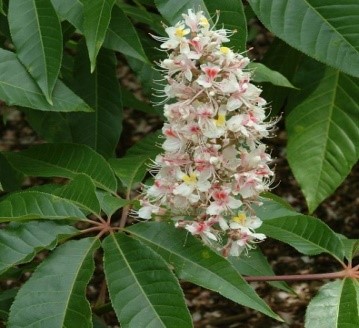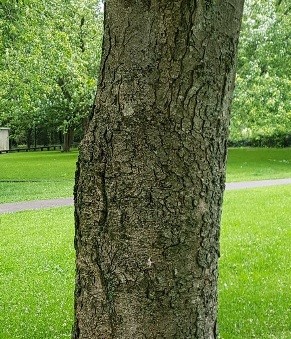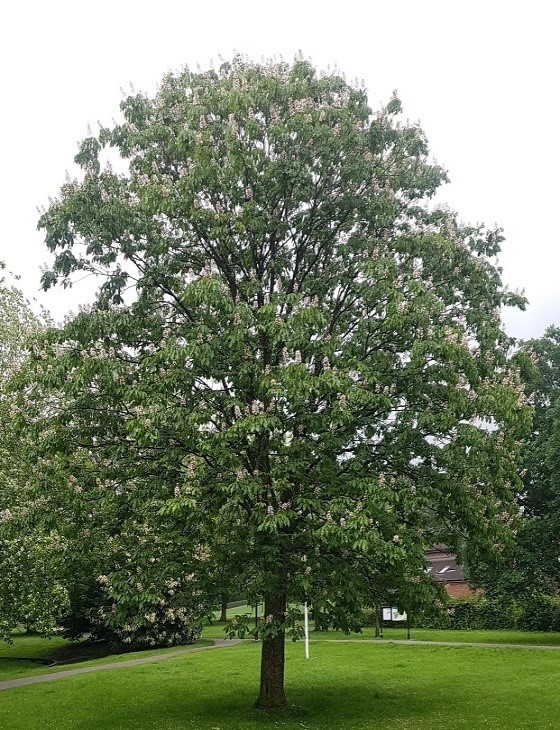Trees
Aesculus indica (Wall. ex Camb.) Hook. f.
Aesculus indica (Wall. ex Camb.) Hook. f.
Description :
A
large, deciduous tree, 20 to 30 m tall and with a diameter of 1.2 to 1.3 m. The
trunk is short, and the crown is broad, spreading and rounded. The leaves are
compound, with the leaflets in groups of 5 to 7 at the end of a stalk. The
leaflets look like the fingers on a hand. The leaflets are large, 15 to 25 cm
long and 5 to 8 cm wide. The leaflets are oblong-shaped, pointed and the edges
are sharply toothed. The bark is grey and smooth gradually becoming rougher and
darker with age. The older bark will peel off in strips 60 cm long. The white
tinged, yellow flowers are borne in large upright bunches, 15 to 35 cm long,
which are quite showy. The flowers occur between April and June. The fruit is a
capsule. Each leathery capsule is about 5 cm long and contains one seed. The
seed is smooth, shiny and dark brown in color. The fruiting period is May to November.
It has no known insect or disease problems. It is reproduced both from seed and
by vegetative means. The fruit is a solitary nut with low viability. Storage is
difficult. Seed must be planted as soon as possible after collection. Fast
growing with reported MAI's of 0.5 to 2.0 cm in diameter. Height growth of 60
cm in the first year is not uncommon. This tree is an important component of
the coniferous forest. Planting programs may be needed to preserve this tree
and insure its position as a member of the coniferous forest. Grain is straight
to very fine even textured. Color is Light pinkish, white turning pinkish brown
when exposed to environment having specific gravity of 0.53.
Distribution :
This tree is native to India, Pakistan, Nepal and Afghanistan. In
Pakistan it is found in the Himalayas Mountains. Specifically, it is found in
Swat, Hazara, Murree Hills, and Azad Kashmir. It is also planted in gardens and
along streets in cities because of its shade and flowers. A moderately
intolerant tree that can stand some shade. It grows on deep, rich, moist soils.
But prefers moist, shady sites. It requires a precipitation zone of 700 to 1500
mm/yr or more. It prefers a humid, cool, temperate climate with a temperature
range of -20 to 35°C, in an elevation range of 1200 to 3300 m. It is easily coppiced,
and coppice shoot and seedlings are readily browsed.
Uses :
Is used as Fuel wood. Making handles, furniture, fodder,
buckets and bowls, bobbins, medicinal, and ornamental purposes.



